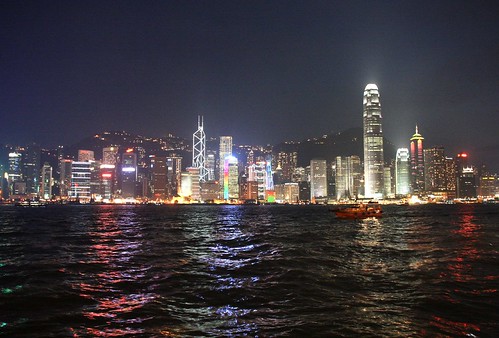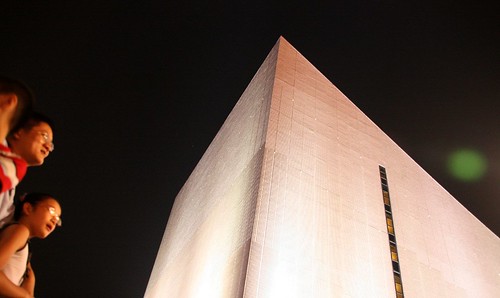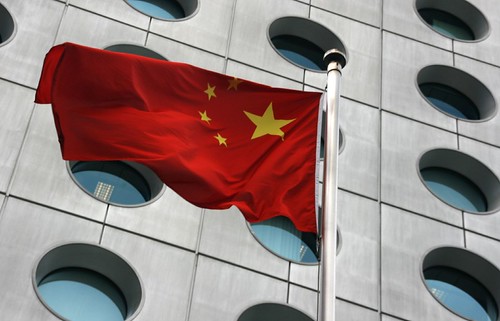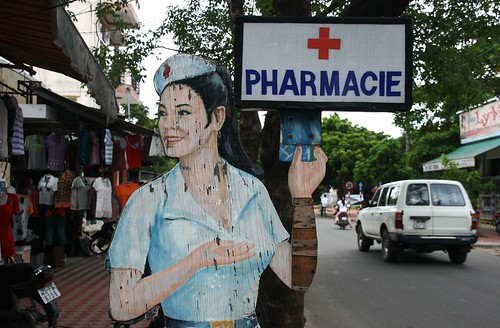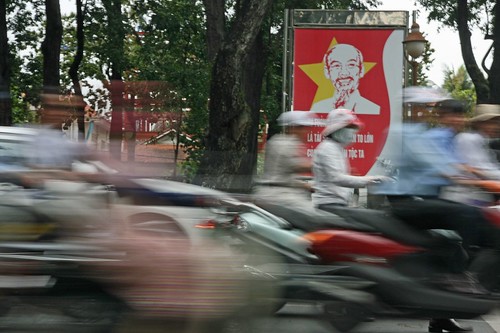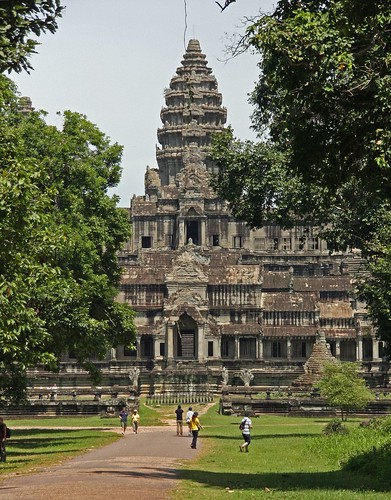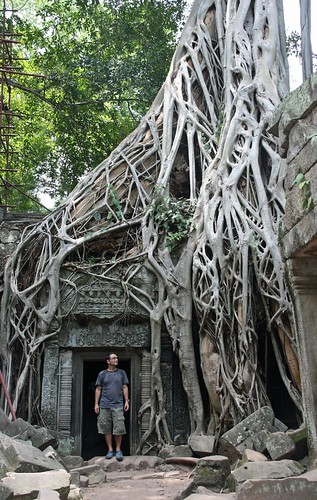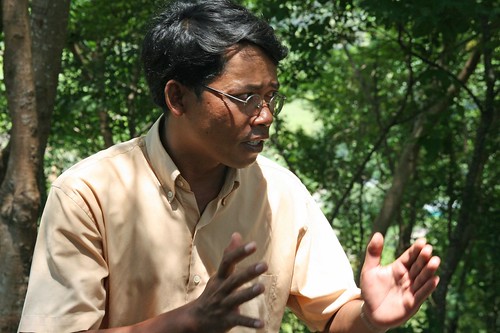England, the United States, Australia, Indonesia, Singapore, Malaysia, Thailand, Laos, Cambodia and now Vietnam. Ten countries in six months, eleven if you count Borneo as separate from Malaysia (there
is a Sabah stamp in my passport). That’s my life in
2007. And every time I’ve entered a new country, the first 24 hours have presented me with challenges delightful and frustrating, exciting and depressing, and always enlightening.
It was with this state of mind that I disembarked from a long-distance bus in
Ho Chi Minh City, Vietnam. The journey from Phnom Penh in Cambodia started at the crack of dawn and took seven long hours, including an hour to get through immigration. I’d booked a hotel in advance and was looking forward to flopping on a lumpy bed for a few hours of sleep.
More than once I’ve heard travelers refer to Vietnam (rhymes with “ham”) as Viet-scam. I filed this information in the back of my brain, between the names of the islands in the Andaman Sea and remote tracks in the Australian Outback. When I reached HCMC, the information bubbled to the surface, leading me to raise the scam-o-meter to
orange.
By coincidence, the bus deposited me on the same block as my hotel. However, the motorbike driver who intercepted my passage across the busy street told me the hotel was too far too walk. Orange Alert! I shrugged him off and 20 seconds later was standing in the hotel’s lobby.
The young woman behind the reception desk, the
Redsun Hotel in the backpacker mecca of
Pham Ngu Lao, may or may not have received my Internet booking. I established that my name was indeed on her list of reservations, then she told me that she didn’t have a room, that a guest “has sick” and would be staying in the room I reserved. She told me she’d take me to another hotel and then pick me up in the morning and bring me back. The situation reeked of scam, but she was apologizing profusely and looked ashen and ill so I gave in.
She took me to another hotel, on a loud street about five minutes away. I was put in a room on the top floor and was even able to receive a weak
Wi-Fi signal. I’d chosen the Redsun because it offered Wi-Fi in the rooms and I wanted to spend some time updating my blog. The night passed without incident, with me busting a gut while watching a bootleg DVD of "
Knocked Up," and in the morning I was taken back to the Redsun.
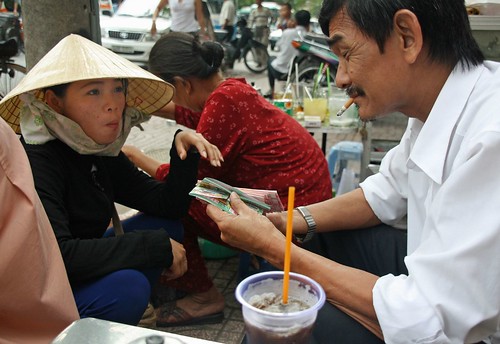 Iced Coffee and Lottery Tickets in Ho Chi Minh City
Iced Coffee and Lottery Tickets in Ho Chi Minh CityI'd love to say that everything is hunky-dory at the Redsun. I can’t. Only one of three lights in my room works. The woman who owns the place insisted on sending her 12-year-old son to dismantle the main fixture while I was in the room, despite my pleas that I wasn’t feeling well and would prefer that they fix the light the next day. Also, there is a Wi-Fi signal but it’s extremely weak and craps out every ten minutes. Remember what it was like to use a
56K modem? It’s worse. To top it off, the young woman who checked me in has checked me out and turned creepy – I think she wants to marry her for a green card.
I found another hotel today, just across the lane from the Redsun, and will be checking in tomorrow. The Redsun isn’t the worst place I’ve stayed in – that honor goes to a hostel on the beach in Perth, Australia – but it’s in the running for the top three, certainly the most frustrating in Asia. It makes the hotels in Cambodia look like well-oiled machines.
I am happy to report, however, the rest of my first 24 hours in Vietnam have been fantastic.
I bitched and moaned in Thailand about being lonely on the road, then I went to
Laos and
Cambodia and made some. The last four weeks brought new friendships and a boatload of hangovers. I wouldn’t trade the experiences for anything. Still, when I set out to explore HCMC on my own I was reminded of how much I enjoy the freedom inherent in traveling alone.
I like to sketch an outline of exploration when I arrive in a new city. The route will always take in a public market, a museum and a city square. I always make time to sit at a café and watch people. I will browse for hours in the bookstores. I seek out side streets and neighborhoods where there are no other tourists. In short, I clear my head and open my eyes. It’s the best way I know to orientate myself to new surroundings.
So I set out early for
Ben Thanh Market, a vast complex packed to the rafters with merchandise, food and shoppers. Markets tend to look that same the more you visit, like department stores and parks, but I love them and find great pleasure in wandering the aisles. Perhaps it’s because I try to bring a photographer’s eye to each place, looking for colorful, unusual and exotic details. After 20 minutes of shutter-induced euphoria my battery ran out. My spare was dead too! Crap.
 Pickled at Ben Thanh Market
Pickled at Ben Thanh MarketMy morning at the market cut short I returned to the hotel to plug in the charger for an hour. It was at this point that the woman at the hotel turned creepy. Interesting and enlightening, yes. But also quite uncomfortable. If she were attractive and sane I might give it a chance.
Anyway, I returned to the streets and just started walking. I passed an ice factory, stopping to stare at one man sawing blocks and another loading bags of fist-sized cubes into a truck. They seemed confused by my curiosity and pushed me into the frigid cooler to take some photos. At an intersection near the Fine Arts Museum I was nearly run over by a motorbike while crossing the street. (There are more motorbikes in Vietnam than sheep in New Zealand, I think.) The art, all of it approved by the government, wasn’t worth the fright, but I enjoyed the faded grandeur of the
yellow-and-white building. On a street lined with antiques and curios, I paused to watch two men play
Xiangqi, or Chinese Chess. The game is baffling and I have no desire to investigate further (I stink at regular chess, so why would I?).
 Ice Man
Ice Man Sculpture at Fine Arts Museum
Sculpture at Fine Arts Museum Sidewalk Xiangqi
Sidewalk XiangqiThe next stop was the outdoor street market at Dong Ton That Dam. This is the real deal, a street-level affair catering to the locals, where butchers fillet on wooden boards, cigarettes are piled to the sky and packages of dried noodles are laid out in patterns rivaling the greatest mosaics in Italy.
It was at this point that my life as a traveling gourmand took a turn. No, I didn’t eat another spider> Or grubs or pig’s trotters. In fact, what I ate was rather pedestrian: vermicelli noodles with barbecued beef (bun bo?). I’ve been in Asia four months and have not suffered one bout of
gastroenteritis. I’m as regular as the sun and the moon (too much information, sorry), a condition that I attribute to my healthy intake of spicy chilies. It's a state of affairs that has given me the courage to take some risks.
I wouldn’t eat street food just after getting of the plane. After four months, however, I believe all the the bugs in my stomach are locals. Lest you think I’m crazy, I still wouldn’t drink out of the tap or eat sketchy meat off of a street cart. Some people refuse ice cubes; I’d die without an iced coffee in the afternoon. In the end, I trust my instincts and I'm always thinking about what goes in, lest I'm unhappy about how it comes out.
Okay... moving on. I ate street food and hoped for the best. I've eaten a lot of food of the streets, but it's always been soup or rice, dishes cooked through and through. This was different, with fresh vegetables thrown on top of cooked ingredients. Where were those vegetables washed? That's what worried me. Twenty-four hours later, I’m feel better than I did before the meal. You only live once.
 Lunch Counter
Lunch CounterThe rest of the afternoon, I played tourist. Every guidebook lists the buildings a tourist should visit. Sometimes it seems from reading recommended itineraries that cities are nothing more collections of concrete and stone, sometimes wood. I passed by the Rex Hotel, the Reunification Palace, the Hotel de Ville, the Municipal Theater, and every time there were tourists taking pictures of themselves outside the front door.
I was surprised by one building. The highlight of my architectural tour was the main
post office, a grand old building with a large portrait of Ho Chi Minh at the end of a
long arched interior. The building was constructed in the late 1880’s in the French style. Someone’s been taking care of it; the interior is spit-polished, bright and extremely beautiful. The last time I saw a functioning building that
took my breath away was back in the middle of May in Kuala Lumpur.
 Ho Chi Minh (and Ghosts)
Ho Chi Minh (and Ghosts)The day ended with a steaming bowl of
Pho, a noodle and beef soup that could be considered the national dish, but only if there were not so many other delicious dishes clamoring for attention. I’ve just touched the tip of the Vietnamese culinary experience. More to come, I promise.
I didn’t do anything out of the ordinary on my first 24 hours in Vietnam. For me the joy of travel is accepting the unexpected, and if I’m not expecting anything then everything holds the potential for excitement. Drinking fresh coconut juice while squatting on a Ho Chi Minh City sidewalk gives me as much pleasure as seeing great art or watching a sunset. It‘s all new to me these days, and that’s what I love about life on the road.
 Coconut?
Coconut?Labels: Cities, Travel, Vietnam
